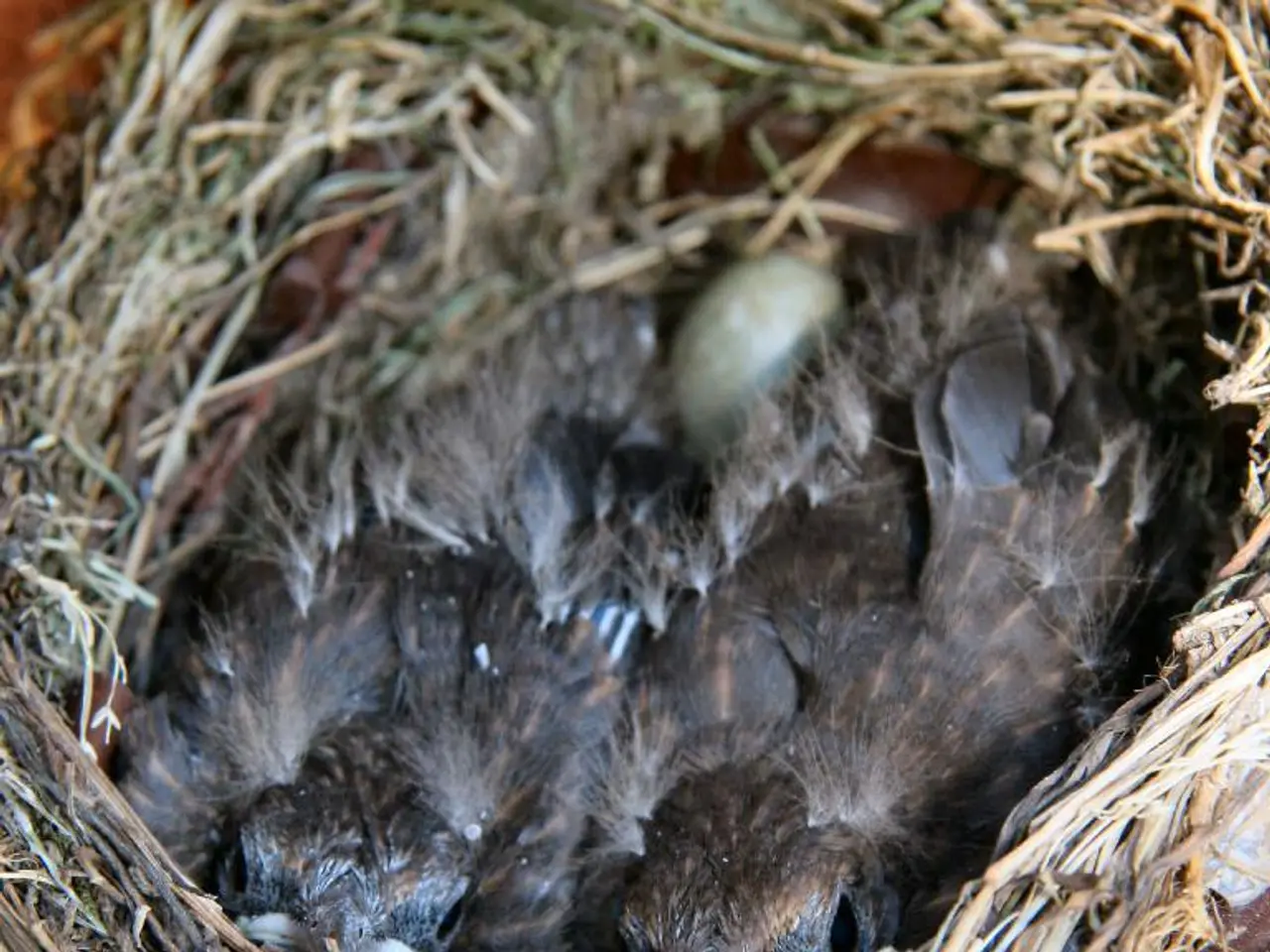Torn Relationships Among Great Tits Reported by Avian Specialists
A new study led by Adelaide Daisy Abraham, a behavioral ecologist at Oxford University, has shed light on the social dynamics of great tit birds, revealing that their "divorces" are not sudden events but reflect a gradual social disengagement that can be detected months before the breeding season.
The study, published in Proceedings of the Royal Society B on July 30, found that social behavior during the non-breeding winter months strongly influences the "divorce" rates among wild great tit birds. Pairs that later separated exhibited significantly less social interaction over winter, often feeding at different times and locations, and showed less tendency to socialize with each other compared to faithful pairs whose bonds strengthened over time.
Key factors influencing social behavior and subsequent divorce include the level of winter social interaction, bond strength over time, feeding behavior, and social preferences. Divorcing pairs spend less time together, socially and at feeders. They also visit feeder stations at different times, reducing opportunities for interaction. Furthermore, birds heading for divorce tend not to show partner preference in social settings during winter.
The researchers used RFID technology at feeding stations in a long-term study population (Wytham Woods) to track individual social associations, providing high-resolution data that linked winter social patterns to spring breeding pair outcomes. This suggests that great tit "divorce" is not a sudden event but reflects a gradual social disengagement detectable months beforehand.
Great tits, small, yellowish songbirds common to the woodlands of Europe, are known for their monogamous behavior during the breeding season. However, the study did not provide a definitive explanation for why tit couples separate. Abraham suggests that there is still a lot to learn about the intelligence of creatures on Earth, such as tit birds.
Signs of tit divorce emerge as early as late summer, becoming more prominent over winter. Some tit couples remain together throughout the winter, while others start drifting apart. The researchers surmised that the decision for tit couples to stay together may depend more on "social decision-making" throughout the season.
Future studies are planned to explore causal relationships in tit bird behavior. Questions raised by the study include: are divorced birds as successful in mating, do they exhibit different parenting patterns, are they influenced by better mating choices, and do some get shoved out by competition?
The combination of tit pairs wasn't as random or confined to proximity as was previously believed. The study tracked individual great tits found in the woods near Oxford over a period of three years.
Josh Firth, study senior author, emphasizes that there is more complexity in bird flocks than one might think. "This study highlights the importance of understanding tit fidelity in the broader context of non-human intelligence," he said.
References:
[1] Abraham, A. D., Firth, J., & Kempenaers, B. (2021). Winter social behaviour predicts spring pair formation and dissolution in great tits. Proceedings of the Royal Society B, 288(1947), 20203116.
[2] Proceedings of the Royal Society B. (2021, July 30). Winter social behaviour predicts spring pair formation and dissolution in great tits. ScienceDaily. Retrieved August 1, 2021 from www.sciencedaily.com/releases/2021/07/210730123549.htm
- The study conducted by Adelaide Daisy Abraham and her team reveals that AI technology can help in understanding the social behavior of wild great tit birds, contributing significantly to the field of science, particularly in the study of health-and-wellness (mental health) and lifestyle, as it reveals the importance of social interaction in maintaining relationships among these birds.
- Furthermore, the findings of the study suggest that the social dynamics of great tit birds can provide insights into human relationships, as it shows that divorce among these birds isn't a sudden event but a gradual social disengagement that can be detected months beforehand, similar to human relationships and mental health issues in health-and-wellness.
- As Josh Firth, the study senior author, points out, this research highlights the need for further exploration of non-human intelligence, particularly in the realm of health-and-wellness and lifestyle, as it demonstrates that understanding the social behavior of animals, such as great tit birds, can offer valuable insights into the complexities of social decision-making and relationships.




